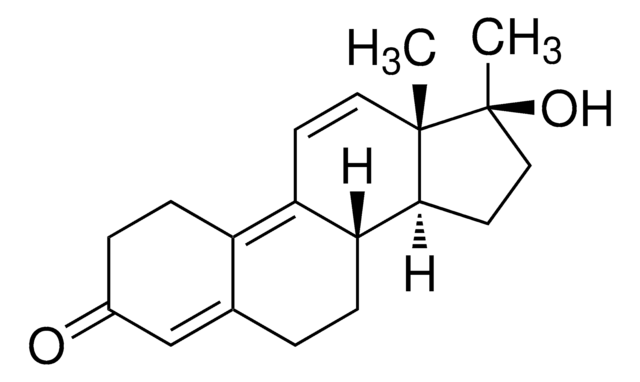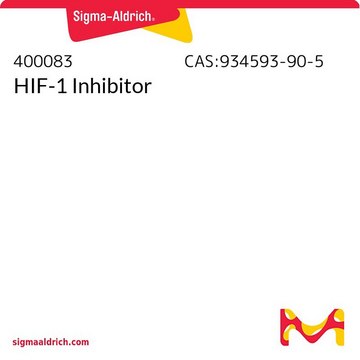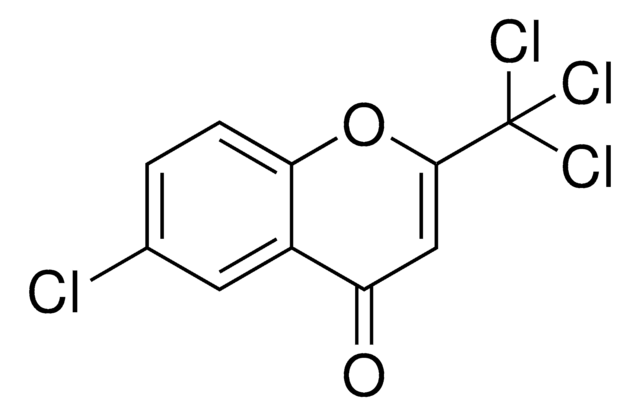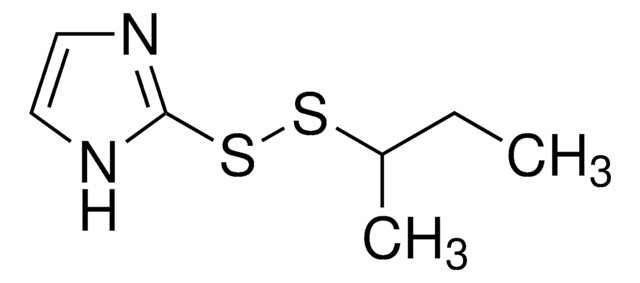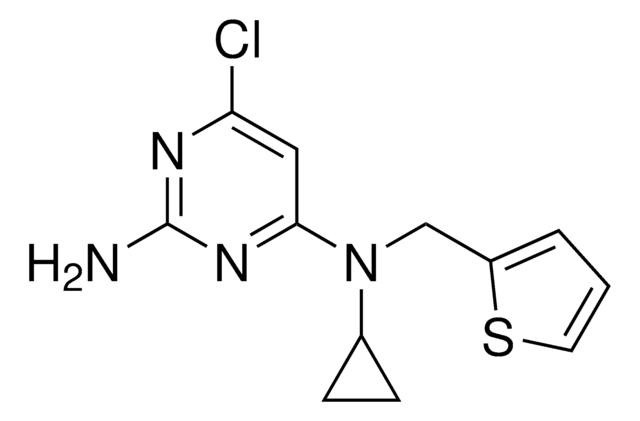推荐产品
化驗
≥98% (HPLC)
形狀
powder
顏色
off-white to light brown
溶解度
DMSO: ≥40 mg/mL
儲存溫度
2-8°C
SMILES 字串
Cc1ccc(cc1)C(=O)COC(=O)c2cccc(NC(=O)c3ccc(cc3[N+]([O-])=O)[N+]([O-])=O)c2
InChI
1S/C23H17N3O8/c1-14-5-7-15(8-6-14)21(27)13-34-23(29)16-3-2-4-17(11-16)24-22(28)19-10-9-18(25(30)31)12-20(19)26(32)33/h2-12H,13H2,1H3,(H,24,28)
InChI 密鑰
XVUOIWIIQVGWAJ-UHFFFAOYSA-N
應用
FM19G11 has been used as ahypoxia-inducible factor-1α (HIF- 1α):
- to study the effects ofFM19G11-loaded gold nanoparticles (NPs) on self-renewal and proliferation of ependymal stem progenitor cells (epSPCs) of mice
- to study its effects on the O6-methylguanine DNA-methyltransferase (MGMT) expression in glioblastoma (GBM) cells
- to study its effects on microphthalmia-associated transcription factor (MITF) expression in melanoma cell line
生化/生理作用
FM19G11 is an inhibitor of Hypoxia Inducible Factor α (HIFα), reported to affect self-renewal and differentiation of stem cells.
FM19G11 is an inhibitor of Hypoxia Inducible Factors α (HIFα), reported to affect self-renewal and differentiation of stem cells. Hypoxia-inducible factors (HIFs) are transcription factors that respond to changes in available oxygen in the cellular environment. Among other functions (like angiogenesis), HIFα proteins affect the self-renewal and the differentiation processes of stem cells. FM19G11 inhibits the HIFα proteins that repress the target genes of the two α subunits, in various tumor cell lines as well as in adult and embryonic stem cell (ESC) models.
儲存類別代碼
11 - Combustible Solids
水污染物質分類(WGK)
WGK 3
閃點(°F)
Not applicable
閃點(°C)
Not applicable
Sung Ji Choi et al.
PloS one, 8(3), e58662-e58662 (2013-03-23)
Although both glucose deprivation and hypoxia have been reported to promote cascades of biological alterations that lead to induction of inflammatory mediators, we hypothesized that glucose deprivation and hypoxia might show neutral, synergistic or antagonistic effects to each other on
UV-protection timer controls linkage between stress and pigmentation skin protection systems
Malcov B, et al.
Molecular Cell, 72(3), 444-456 (2018)
Chao-Guo You et al.
Cancer medicine (2018-05-16)
FM19G11 is a small molecular agent that inhibits hypoxia-inducible factor-1-alpha (HIF-1α) and other signaling pathways. In this study, we characterized the modulating effects of FM19G11 on O6 -methylguanine DNA-methyltransferase (MGMT), the main regulator of temozolomide (TMZ) resistance in glioblastomas. This
Kazuhiko Yamamura et al.
Nature communications, 8, 13946-13946 (2017-01-10)
Mutations of DOCK8 in humans cause a combined immunodeficiency characterized by atopic dermatitis with high serum IgE levels. However, the molecular link between DOCK8 deficiency and atopic skin inflammation is unknown. Here we show that CD4
Kacper A Wojtal et al.
American journal of physiology. Gastrointestinal and liver physiology, 307(7), G673-G688 (2014-06-28)
Solute carrier (SLC) transporters mediate the uptake of biologically active compounds in the intestine. Reduced oxygenation (hypoxia) is an important factor influencing intestinal homeostasis. The aim of this study was to investigate the pathophysiological consequences of hypoxia on the expression
我们的科学家团队拥有各种研究领域经验,包括生命科学、材料科学、化学合成、色谱、分析及许多其他领域.
联系技术服务部门
